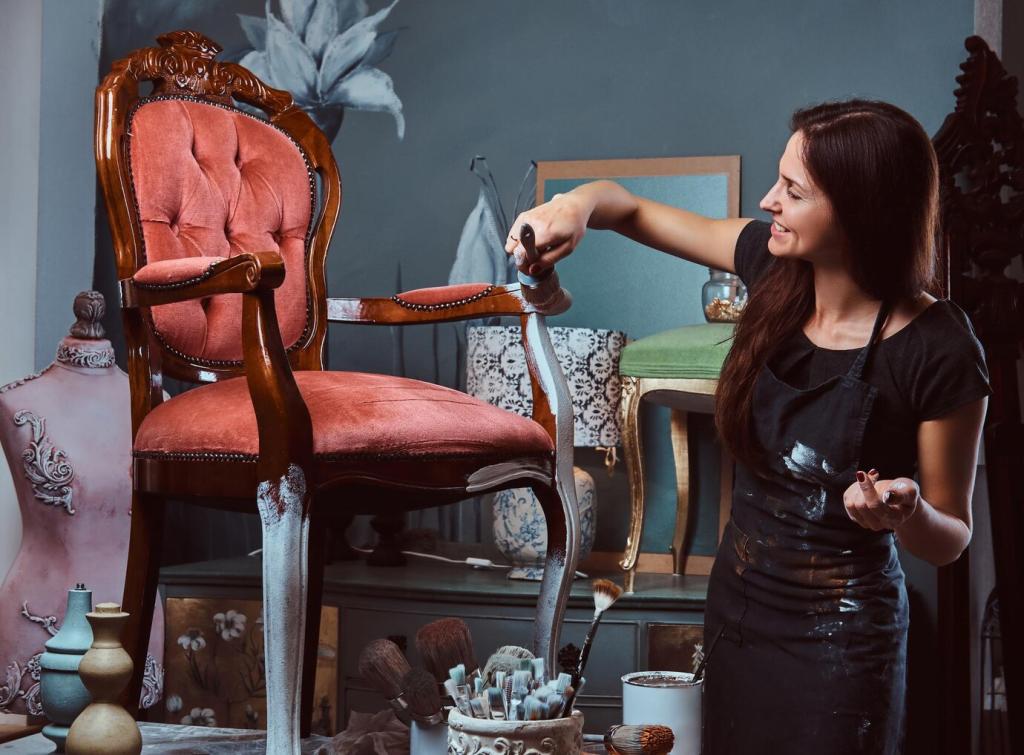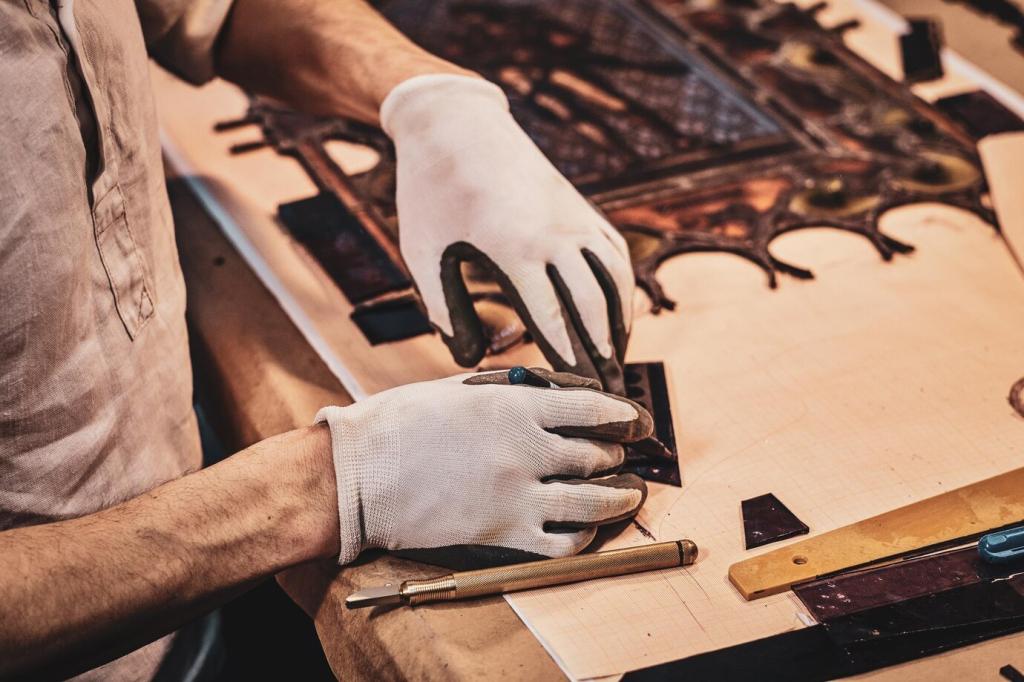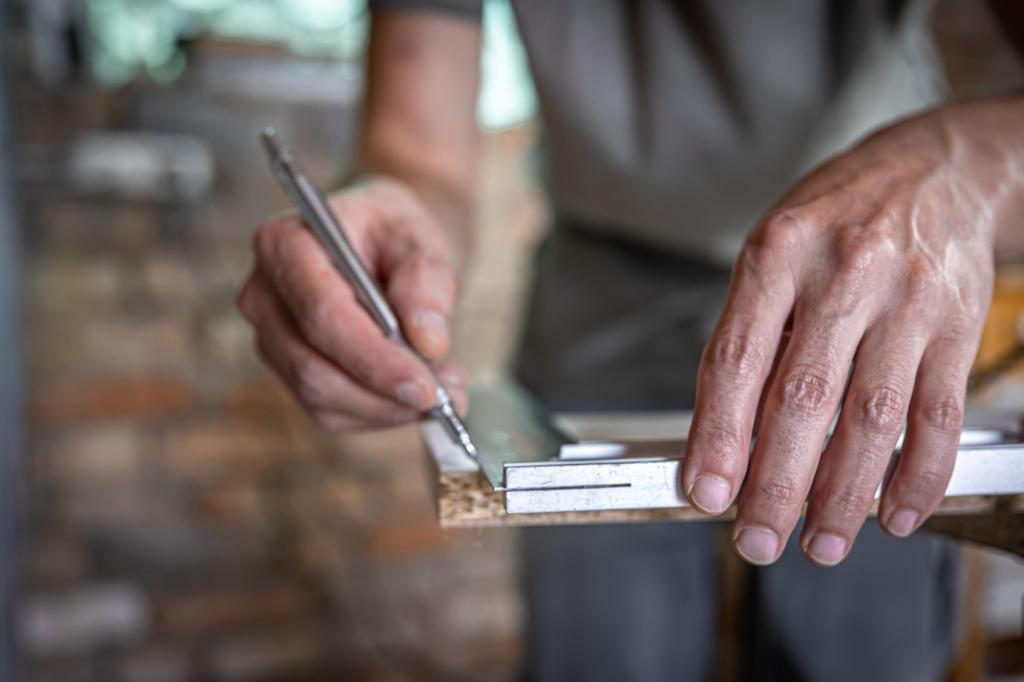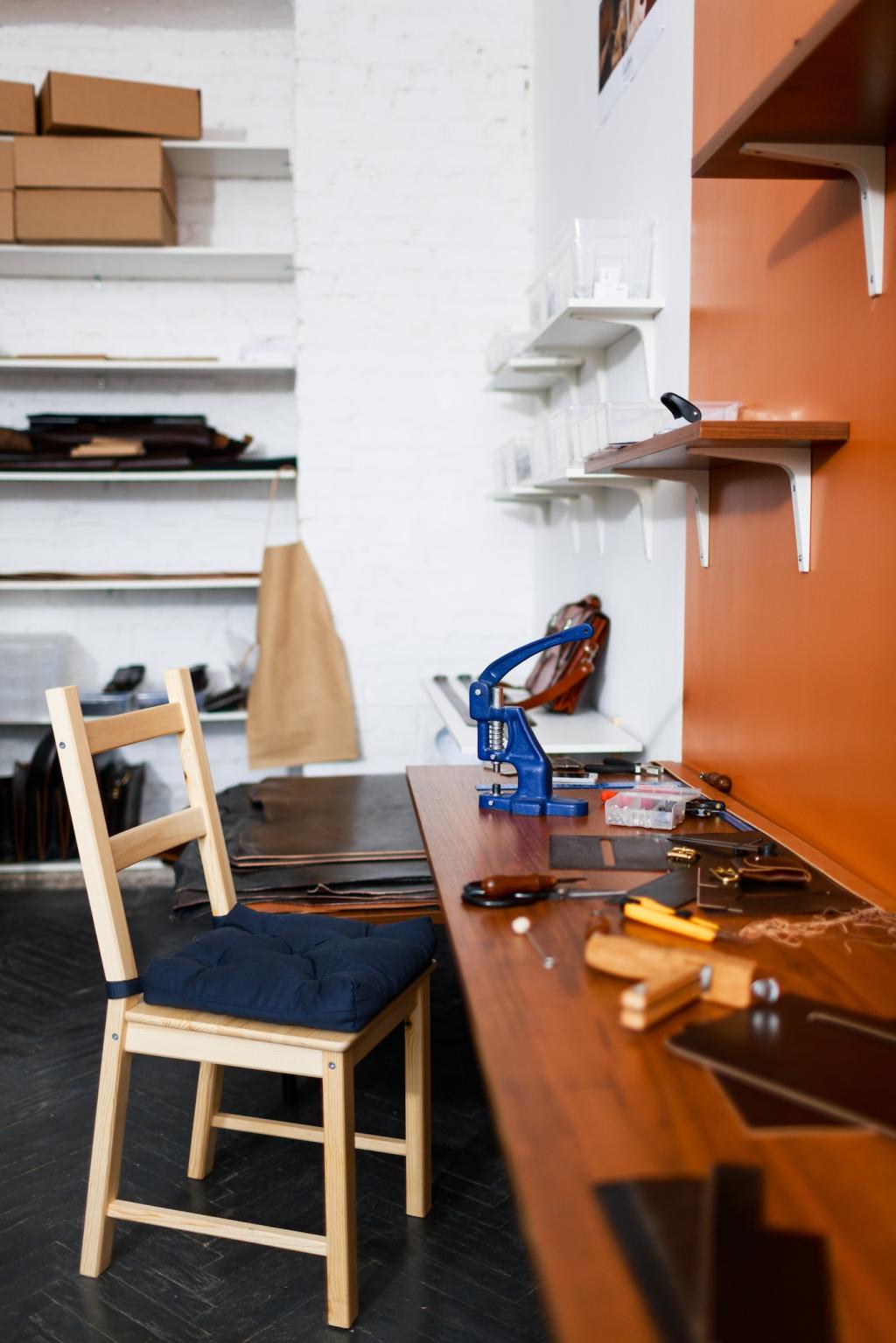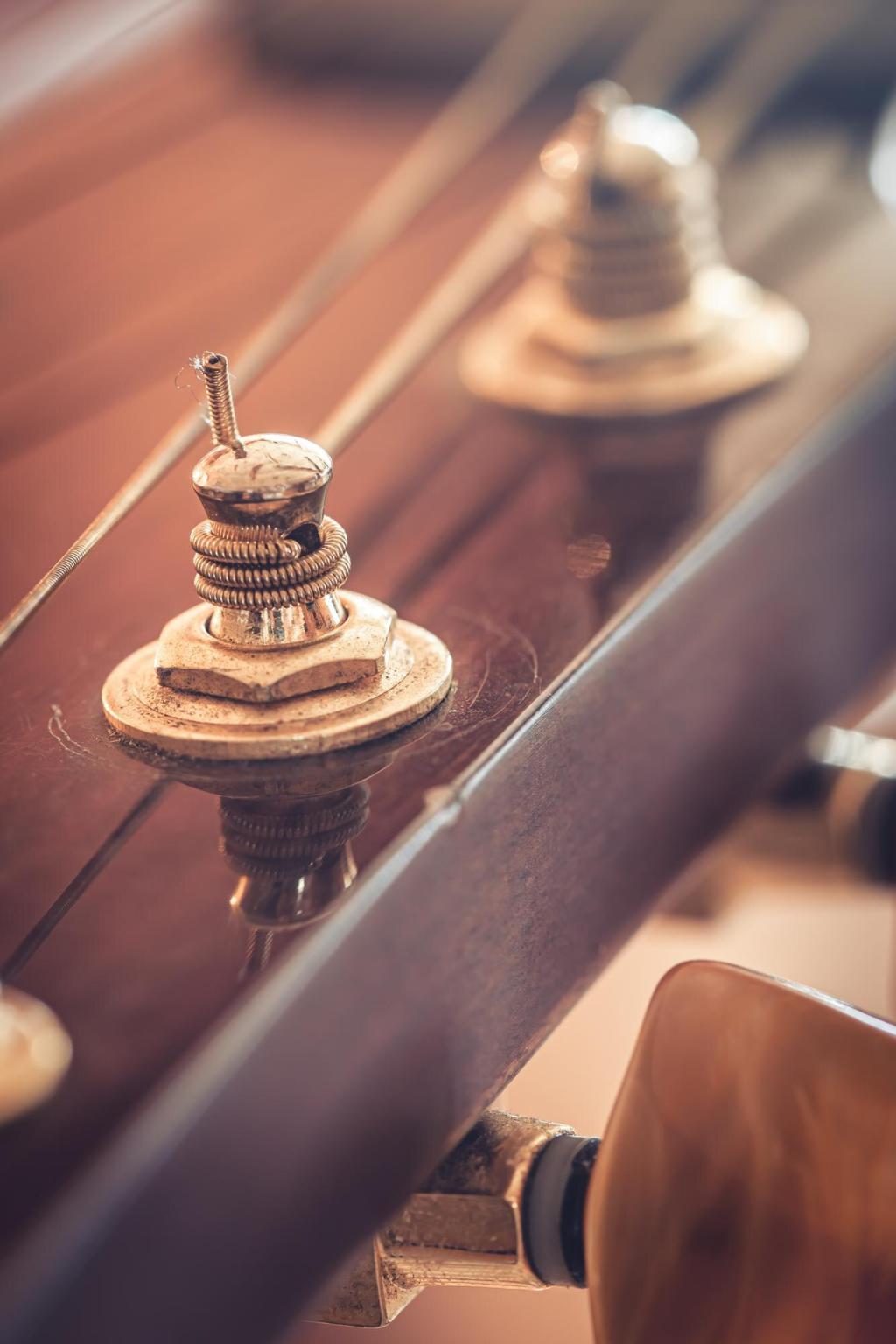Color Building: Layering Techniques That Respect History
A thin shellac washcoat—often a one-pound cut—acts as a gentle gatekeeper, evening absorption on cherry and softwoods. Commercial pre-stain conditioners can help too, though timing is critical. The goal is predictability, preserving figure while avoiding splotches. Keep layers light so grain still speaks clearly through color.
Color Building: Layering Techniques That Respect History
Many restorers begin with a diluted dye to set an undertone, then add a pigmented stain to emphasize pores. This two-step approach produces antique-like dimensionality. On mission oak, for instance, a warm dye yields glow, while a brown pigment anchors rays. Record formulas to recreate success consistently.

